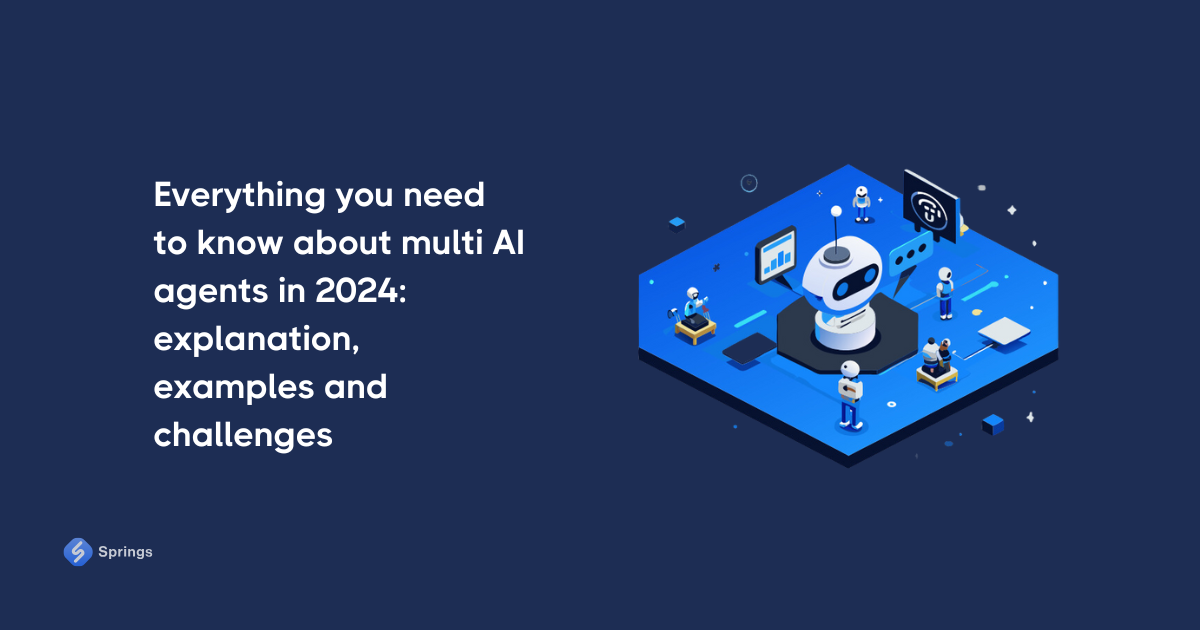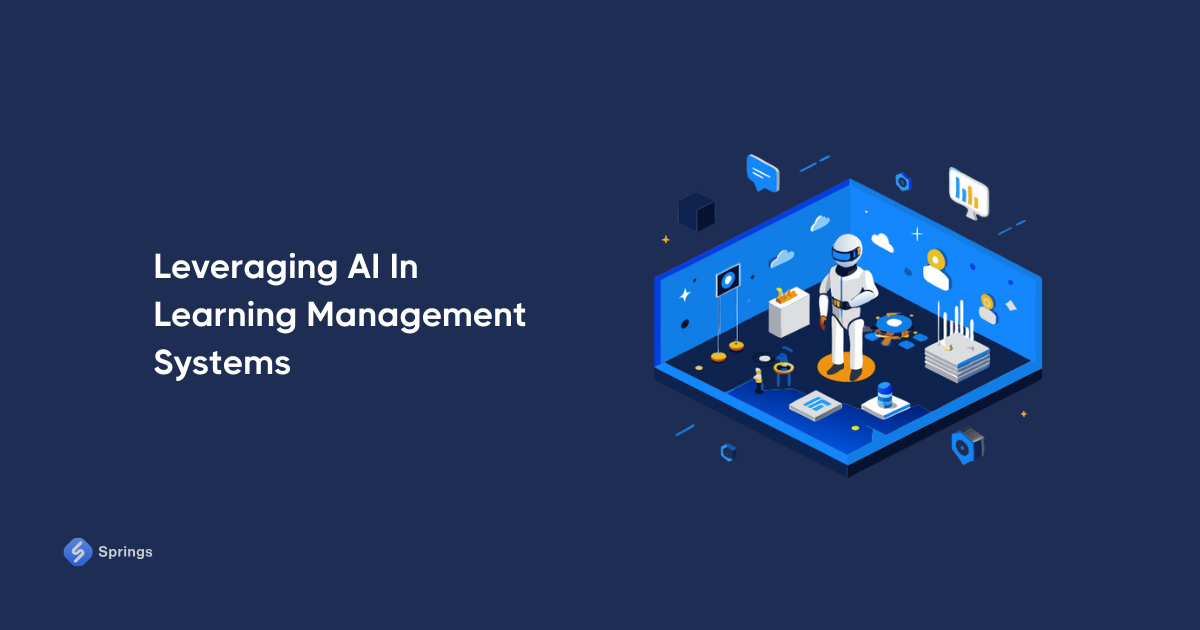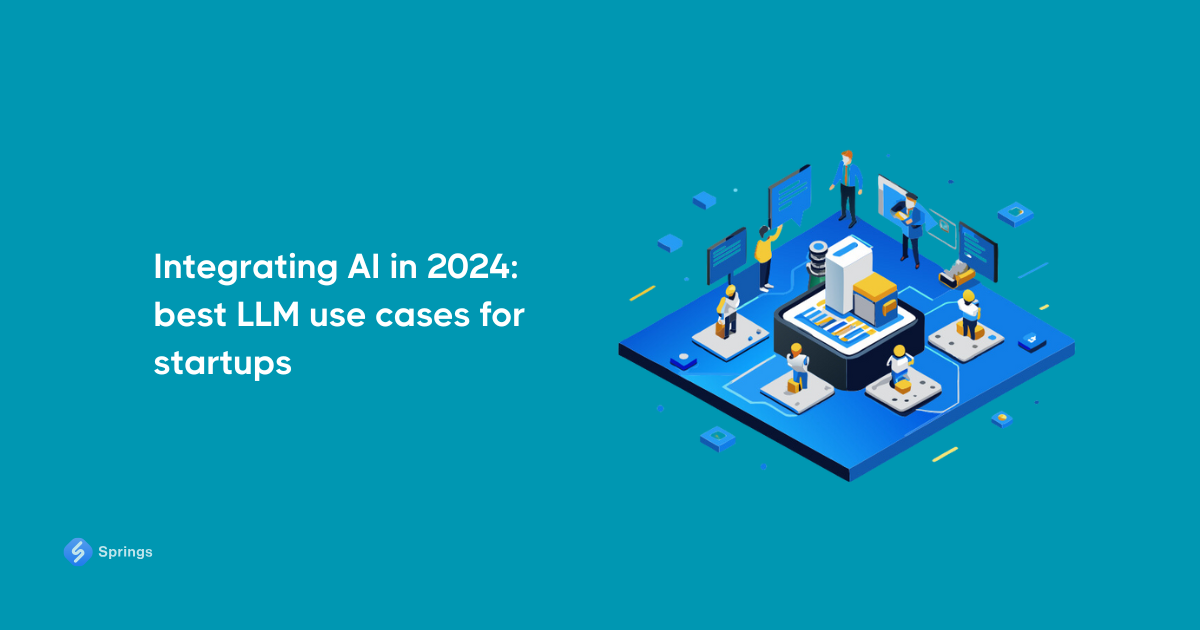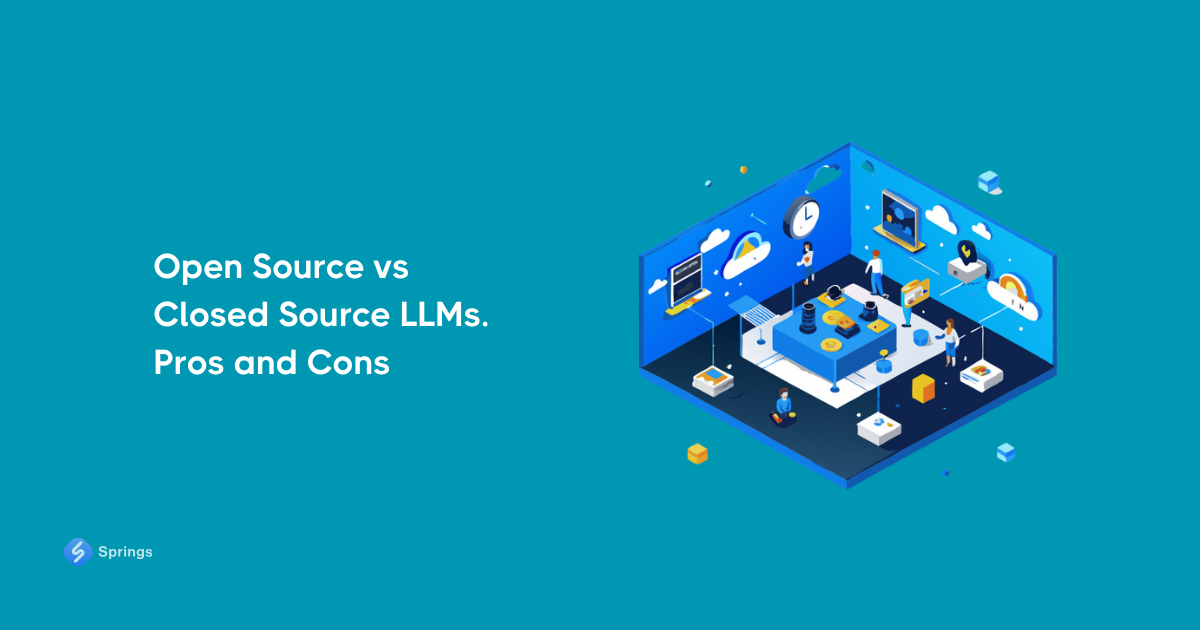Implementing Generative AI in Compliance: Challenges & Insights from Springs
Intro
Compliance. Regulatory. Privacy Policy. Legal. How often do we hear these words today in a business area? Very and very frequently, because these are the terms that are crucial for many businesses worldwide.
Just imagine that, according to the recent HyperProof research, non-compliance costs businesses an average of $4,005,116 in revenue losses, more than twice the expense of maintaining compliance.
Moreover, according to the Thomson Reuters report, risk and compliance professionals dedicate the majority of their time to identifying and assessing risks (56%) and monitoring compliance (52%). Three of five corporate risk and compliance professionals feel confident about addressing compliance risks.
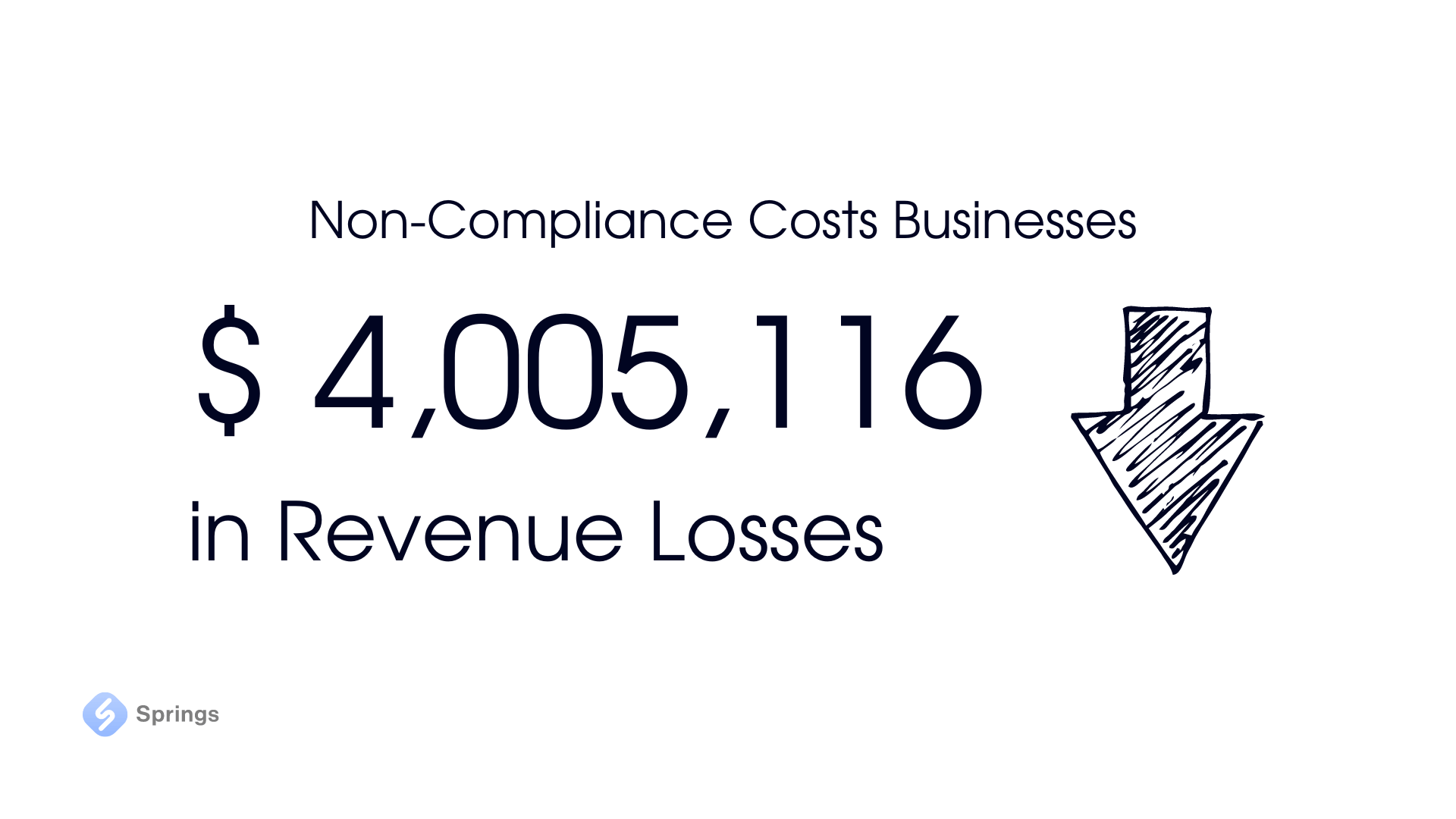
These stats show us that business owners trying to save costs on compliance play the opposite game. They can lose tons of money in the future and even can get into a situation where their business is under a huge risk of being closed.
Compliance plays a critical role in ensuring that businesses operate within legal and regulatory policies, protecting them from penalties, fines, and reputational damage. It helps to build trust with customers, investors, and partners by demonstrating a commitment to ethical practices and risk management.
Additionally, proper compliance also ensures smooth business process automation, reduces the risk of financial losses, and provides long-term sustainability by keeping the business aligned with industry standards and best practices.
Thus, a strong compliance strategy not only mitigates risk but also supports business growth and stability.
The Role of Generative AI in Regulatory Compliance
Generative AI Development has already become a new way of thinking about the usage of technologies to benefit your business. And we are not talking about some hard stuff like creating our machine learning models or understanding neural networks. Let’s do KISS - keep it simple, stupid. AI and Compliance can be a great duo and let’s see why.
With the release of ready-to-use models such as ChatGPT-4o or OpenAI’s Advanced Voice Mode, you do not need to be a super technician to understand that these things are the future of Generative AI for compliance, especially when we talk about their capacities in terms of compliance and regulatory policies. AI in compliance may play a vital role in saving costs and increasing the brand’s reputation.
AI for regulatory compliance offers innovative solutions to the various challenges organizations face in ensuring adherence to regulations.
Regulatory Changes Adaptability
Business Problem. Rapidly evolving regulations across regions and industries can overwhelm organizations, leading to delays in updates and the risk of non-compliance.
AI Solution. AI for compliance by using custom AI Agents can monitor and analyze all the changes, enabling organizations to stay current with evolving regulations. Its adaptability ensures that businesses can swiftly adjust their processes in response to changes, reducing the risk of regulatory gaps.
Decoding Complex Regulations
Business Problem. The legal language and volume of regulatory texts are often too complex for manual interpretation, leading to misinterpretations and compliance errors.
AI Solution. AI-based compliance systems use Large Language Models (LLMs) to analyze vast amounts of regulatory data, providing accurate interpretations of intricate legal texts. This capability enables organizations to implement regulations correctly, minimizing errors.
Coordinated Compliance Efforts
Business Problem. Lack of centralized systems and poor communication can hinder efficient compliance management, particularly for organizations operating in multiple jurisdictions with diverse regulations.
AI Solution. Regulatory compliance AI enables centralized management of compliance activities, facilitating smooth coordination across teams and regions. By streamlining communication and data sharing, AI enhances collaboration and ensures unified compliance efforts across multiple areas.
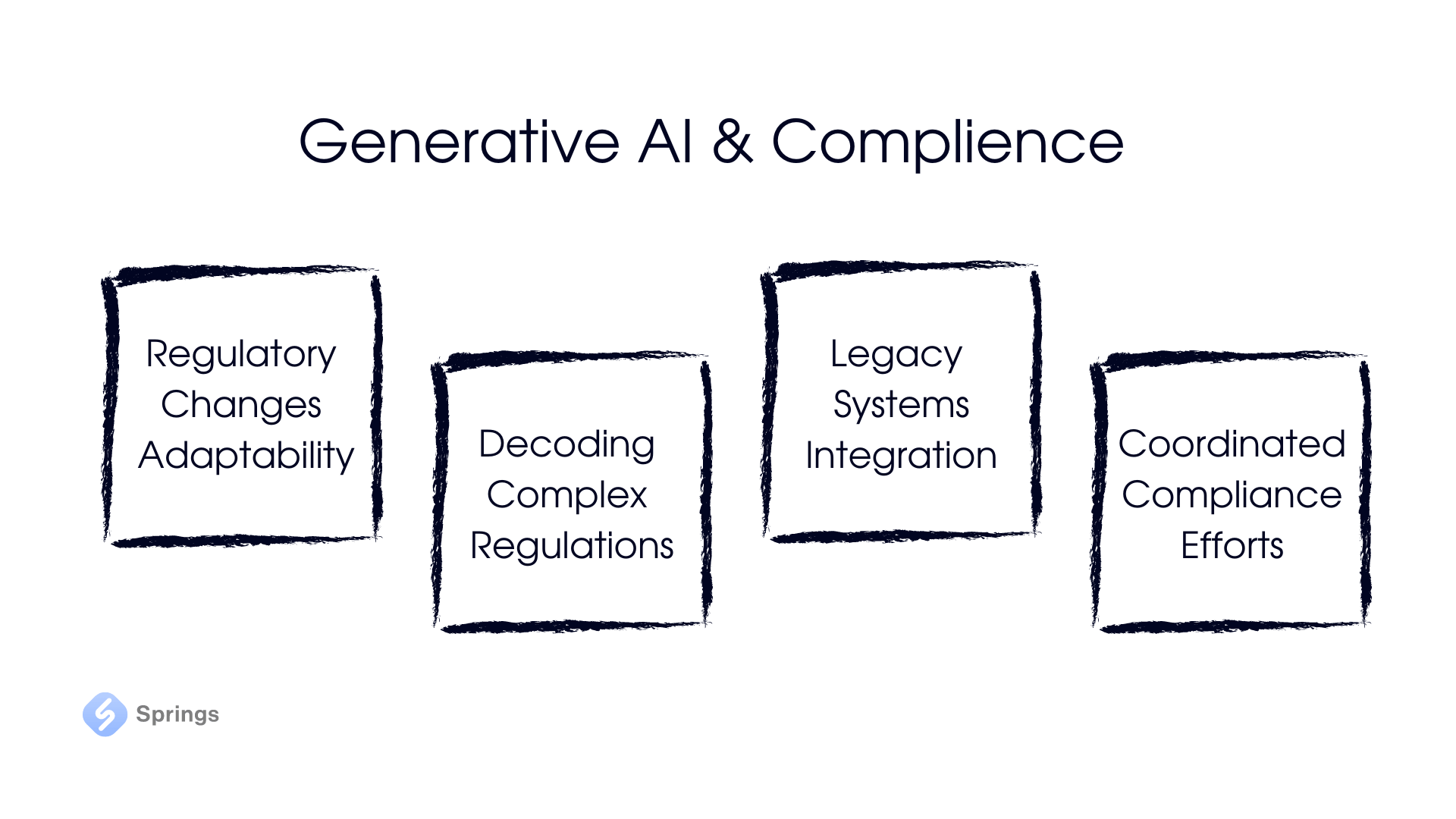
Legacy Systems Integration
Business Problem. Many organizations struggle with outdated legacy systems that create compatibility issues and data inconsistencies, complicating new compliance tool integration.
AI Solution. AI for compliance helps integrate old-dated software, ensuring data accuracy and consistency while overcoming challenges represented by older technology stacks. It helps to achieve a high level of compliance across the organization, even when working with legacy infrastructure.
Supply Chain Regulations
Business Problem. Ensuring compliance throughout a complex supply chain can be a tough process without efficient tracking and verification mechanisms.
AI Solution. AI-based software boosts the verification of regulatory compliance across suppliers and partners. By automating compliance checks, AI compliance tools ensure that supply chains align with relevant laws and standards, reducing manual oversight.
To sum up, AI for regulatory compliance offers a top-notch approach to addressing modern compliance issues. Through advanced monitoring, seamless integration, and centralized management, enterprises and smaller companies can benefit from AI and achieve the highest compliance standards.
How Does Generative AI in Compliance Work?
Integrating generative AI for compliance shows us how enterprises and SMBs manage and adhere to regulatory formats. Today, by using NLP Chatbots and integrating them with a company’s specific knowledge base (RAG AI Chatbots), AI and compliance capabilities are becoming borderless. Let’s try to understand how it works under the hood, and how the AI compliance apps are structured.
The architecture of AI for regulatory compliance involves multiple components that work together as a machine that needs to optimize compliance processes. Below you may see a step-by-step overview of how these elements function together.
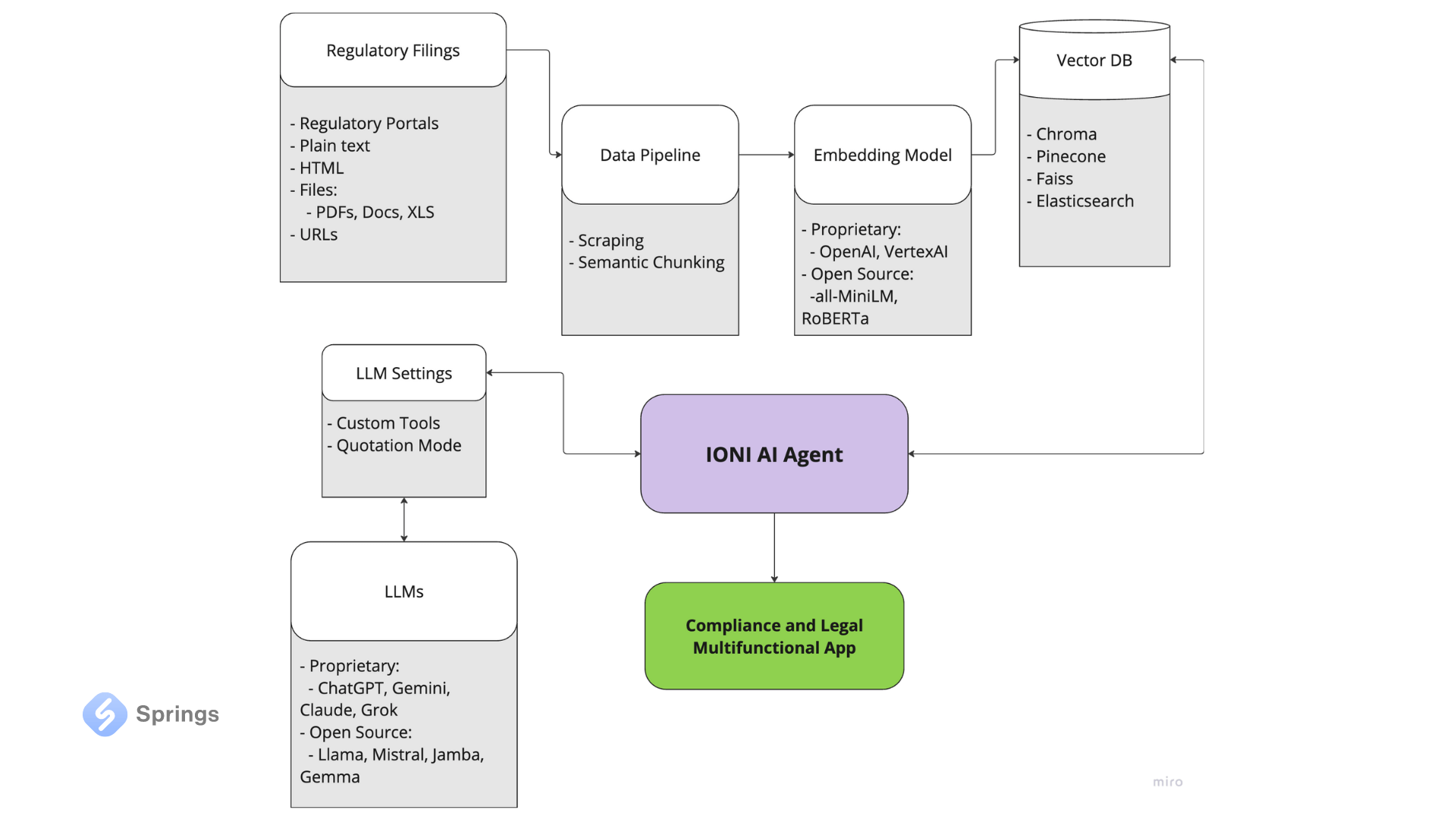
- Regulatory Filings. These are the documents, HTML, Files, PDFs, Docs, URLs, and records related to regulatory requirements and submissions. Overall, the process starts with gathering data from diverse sources pertinent to compliance.
- Data Pipeline. Data from the sources is routed through data pipelines that manage ingestion, cleaning, and structuring, ensuring it's properly organized and ready for in-depth analysis.
- Embedding Model. After processing, the data is fed into an embedding model, which transforms textual information into numerical representations called vectors, enabling AI systems to interpret it. Leading models for this task come from providers such as OpenAI, Google, or Cohere.
- Vector Database. The generated vectors are subsequently stored in a vector database, which enables efficient querying and retrieval of vectorized data. Prominent vector databases usually include Chroma, Pinecone, Weaviate, and PGvector.
- IONI AI Agent. Our AI Agents Platform for compliance delivers validated outputs from Vector DB directly to users in a clear, user-friendly format. At the core of this system are AI agents that manage complex compliance challenges, interact with external systems, and continuously improve through post-deployment experiences.
- Compliance App. IONI is connected to the compliance and legal multifunctional application that consolidates all data, analysis, and insights, providing decision-makers and business owners with the necessary information.
- LLM Settings and Processing. It involves several key components to optimize performance and ensure reliability. LLM cache tools like Redis or SQLite are used to store frequently accessed information, reducing redundant data retrieval and speeding up the AI system’s response time. A validation layer incorporating tools like Guardrails, and LMQL verifies the accuracy of LLM outputs, ensuring reliability and trustworthiness. Finally, LLM APIs and hosting platforms, such as those from OpenAI, Anthropic, AWS, GCP, and Azure, are crucial for executing compliance tasks, with developers selecting APIs and hosting based on the project’s specific requirements.
Challenges and Risks of Using Generative AI in Compliance and How to Overcome Them
Compliance experts need to develop strategies to address a range of challenges while ensuring their companies and enterprises adhere to laws, regulations, and policies. The correct using of AI in compliance processes can significantly boost their ability to do those things. Let’s have a look at the main challenges and solutions that AI for compliance can offer.
Evolving Regulations
The fast-changing regulatory environment demands continuous monitoring. Regulatory compliance AI solutions can automate this process, providing real-time updates on regulatory changes and ensuring that policies are aligned with the latest legal requirements. AI based compliance systems offer alerts and actionable insights, allowing compliance teams to stay ahead of changes.
Complexity
Regulations are often complex and challenging to interpret. AI for compliance software using NLP can analyze and simplify these regulations, offering clear guidelines to compliance officers and reducing the risk of misinterpretation. This automated interpretation helps to increase compliance KPIs across different departments.
Cultural Issues
Building a compliance culture can be difficult in enterprises and companies that lack awareness or commitment. However, AI based compliance tools can assist in creating customized training modules and communication strategies to foster compliance awareness at all levels. AI predictive analytics can also track employee engagement with compliance policies, identifying areas for improvement.
Resource Constraints
The point is that limited resources often hinder compliance functions. The solution is possible to be found. AI in compliance optimizes resource use by automating business processes like data collection, analysis, and multiple reports generation. This allows compliance teams to focus on higher-value tasks such as risk mitigation and strategic planning, significantly improving the efficiency of compliance operations.
New Technologies
Keeping up with new technologies is crucial for managing compliance, especially when we talk about business growth. AI development provides intuitive tools that allow compliance professionals to monitor and enforce compliance more effectively. By integrating AI based compliance software, startups, SMBs, and enterprises can manage complex regulatory policies more easily, reducing the learning curve associated with the latest technologies.
Data Privacy and Security
Ensuring data privacy and security is an extremely important point for any business. The good point is that AI for compliance solutions can monitor data usage in real time, detecting potential breaches and vulnerabilities. These apps can also help implement data protection measures that comply with privacy regulations, especially when we deal with open-source agents, minimizing the risk of financial and reputational damage.
Internationalization
Finally, worldwide companies face specific compliance challenges, including different regulatory frameworks and cultural considerations. So, regulatory compliance AI can help by providing localized insights, automating the adaptation of compliance policies across various regions, and breaking down language barriers through custom web and mobile applications.
Real Examples of Using Generative AI in Compliance with Springs AI Agents
AI Anomaly Detection
Springs' AI Agents Platform can be used for recognizing anomalies by analyzing the provided data to identify potential deviations that could signal compliance issues. Early detection of these anomalies allows companies and enterprises to address potential problems proactively, preventing them from escalating into more serious violations.
Moreover, Springs team offers robust investigative support by providing critical insights and data to assist in investigating potential compliance violations. Through continuous monitoring, our AI Agents can employ advanced analytics to maintain vigilant oversight of compliance concerns, allowing businesses to manage and resolve issues within a short period of time.
AI Compliance Queries Processing
Real-Time Springs' AI Chatbots offer instant, accurate responses to compliance-related queries, delivering immediate insights on procedures and policies. This minimizes the need for human intervention, streamlines response times, and enhances user experience by providing quick, reliable guidance to employees and customers.
Additionally, our AI chatbots for compliance can be customized to guide users step-by-step through the creation of essential compliance documents, such as forms, PDFs, and reports. By gathering relevant information and asking specific questions, the chatbot ensures that documents are both accurate and compliant with regulatory standards. This process accelerates documentation, reducing complexity while maintaining legal compliance.
AI Legal & Security Review
Our AI Agents Platform uses the latest NLP-driven LLM APIs to streamline contract review and analysis. A customized version of IONI can identify and extract crucial contract clauses and obligations, ensuring that key elements and potential risks are highlighted and addressed promptly. This accelerates the review process, helping compliance teams ensure that no critical details are overlooked. Our AI algorithms may also automatically compare contract terms with predefined compliance standards, detecting discrepancies and non-compliance issues early to help meet legal and organizational requirements, reducing the risk of breaches or legal complications.
In addition to real-time compliance checking, Springs’ AI Agents Platform generates detailed reports on a contract's compliance status, offering valuable insights to legal teams. These reports highlight any potential issues and provide a comprehensive overview, supporting effective risk management and compliance efforts.
Finally, our AI Agents Platform can significantly support the development of compliance applications by providing scalable AI solutions customized to empower employees to navigate workplace issues with ease. Our platform can ensure a robust, compliant, and secure architecture, offering solutions for secure authentication (SSO, 2FA), role-based access control, and alignment with WCAG 2.1 Level AA accessibility standards.
AI Predictive Analytics & Global Compliance
Springs' AI-driven platform uses the most advanced predictive analytics to minimize risk mitigation strategies. By the correct usage of historical data, our Generative AI models forecast potential compliance risks and challenges, allowing organizations to implement preventative measures before problems arise.
This forecasting capability enables businesses to anticipate issues and take strategic, preemptive actions to address risks, strengthening overall compliance efforts and improving risk management. Additionally, our product identifies patterns and trends in data, helping your company to anticipate future compliance issues and address them.
Finally, our AI Agents application is fully multilanguage. It can manage compliance across diverse regions and continents. IONI makes sure that regulatory documents and compliance materials are accurately translated, enabling businesses to maintain compliance in multilingual environments. The platform adapts compliance practices to local legal and cultural contexts, ensuring regional requirements are met while promoting unified compliance standards globally.
Benefits of Using AI for Compliance
So, as far as we have already discovered how AI may be used in compliance, let’s define its main benefits. Using generative AI for compliance offers many benefits to business owners and their companies, take a look a them.
- Workflow Automation. AI and compliance impressively boost regulatory tasks by automating document generation and monitoring processes. This reduces the time and effort needed for compliance management, enabling firms to allocate resources more efficiently.
- Accuracy and Consistency. We have to admit that AI for regulatory compliance provides well-observed high accuracy and consistency in documents, PDFs, etc., minimizing errors and discrepancies. AI in compliance represents reliability across procedures, reducing the risk of human mistakes.
- Data Privacy Improvement. AI based compliance plays an important role in handling sensitive data by generating synthetic data that maintains the integrity of original datasets without exposing confidential information. It helps compliance experts to work at the highest level while ensuring data privacy and security.
- Constant Updates. AI for compliance solutions can check the changes in regulatory documentation 24/7, keeping the companies and enterprises compliant with evolving laws and reducing the risk of penalties. It helps businesses a lot to maintain a responsive compliance infrastructure.
- Ethical Compliance. Finally, generative AI in compliance makes ethical standards stronger by monitoring communication data and identifying potential violations. These steps improve ethical workplace culture, reinforcing integrity in business values and standards.
- Improved Accuracy. Regulatory compliance AI aids in identifying risks and non-compliance patterns through data analysis. By utilizing machine learning models, organizations can achieve more accurate risk assessments, improving adaptation to legal regulations.
Overall, businesses that deal with compliance and regulations on a daily basis may feel the real benefits after the AI Agents incorporation.
The Future of AI in Compliance
The nearest future of AI in compliance is expected to be provided by remarkable advancements, driven by both regulatory demands and the newest technologies. As AI models like GPT-4o, GPT-4o Mini, and beyond continue to evolve, we can expect increasingly sophisticated tools that automate complex compliance tasks with greater precision. AI systems will soon have the ability to continuously monitor regulatory changes 24/7, integrating these updates directly into compliance workflows. This will allow many firms to adapt instantly to new laws and policies without manual intervention, reducing the lag between policy shifts and implementation.
A major leap forward will be the integration of explainable AI (XAI) into compliance platforms. As AI becomes more embedded in decision-making, regulators are demanding greater transparency in how these systems operate. New developments in XAI will allow compliance managers to understand the reasoning behind AI-based decisions, making it easier to ensure that automated processes align with both ethical standards and regulatory guidelines.
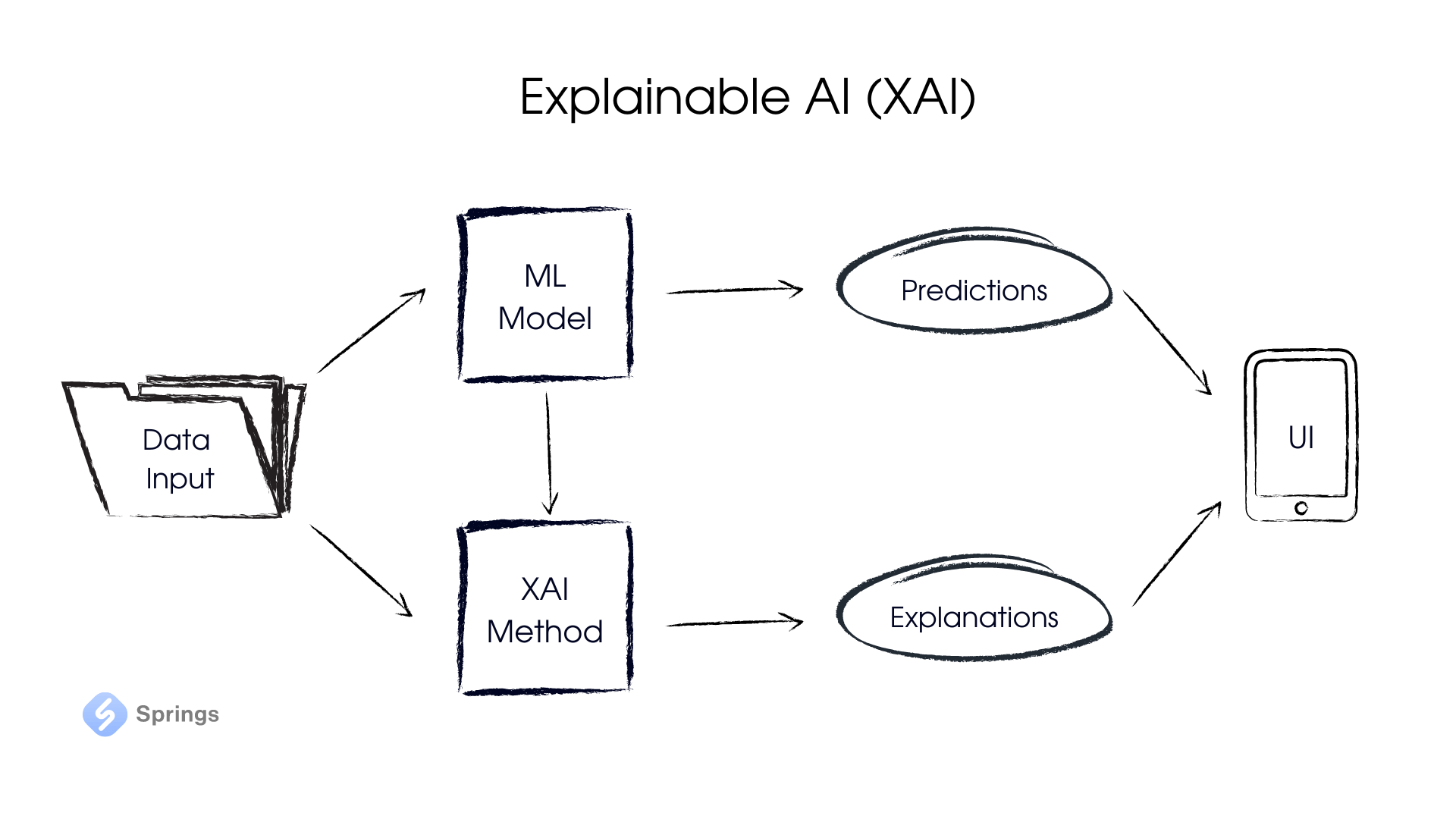
Another exciting prospect is the increasing role of AI in predictive analysis for risk management. AI models will soon be able to forecast potential compliance issues based on previous data and emerging trends, giving business owners the ability to prevent violations before they occur.
As cloud computing continues to expand and technologies like edge computing improve data processing speeds, compliance monitoring will become even more seamless across global operations, ensuring that companies stay ahead of both local and international regulations.
Conclusion
Adherence to rules, standards, and ethical principles is essential for maintaining legal integrity and responsible business practices across multiple industries, such as Healthcare, Legal or Logistics. As far as many enterprises and smaller companies face increasing compliance demands, generative AI for compliance has become a critical tool in navigating these complexities. By automating document generation and managing regulatory tasks, AI and compliance solutions enable businesses to stay on top of evolving legal frameworks. It helps them to shift focus from administrative work to strategic things and considerations.
To sum up, incorporating AI for regulatory compliance provides startups and companies with the ability to monitor and adapt to changing regulations 24/7. AI based compliance solutions improve business KPIs and efficiency by identifying potential risks, ensuring consistency in documentation, and minimizing human error.
Regulatory compliance AI not only supports adherence to complex laws but also helps firms to implement ethical practices, making AI in compliance an invaluable asset for achieving long-term sustainability and legal security.

